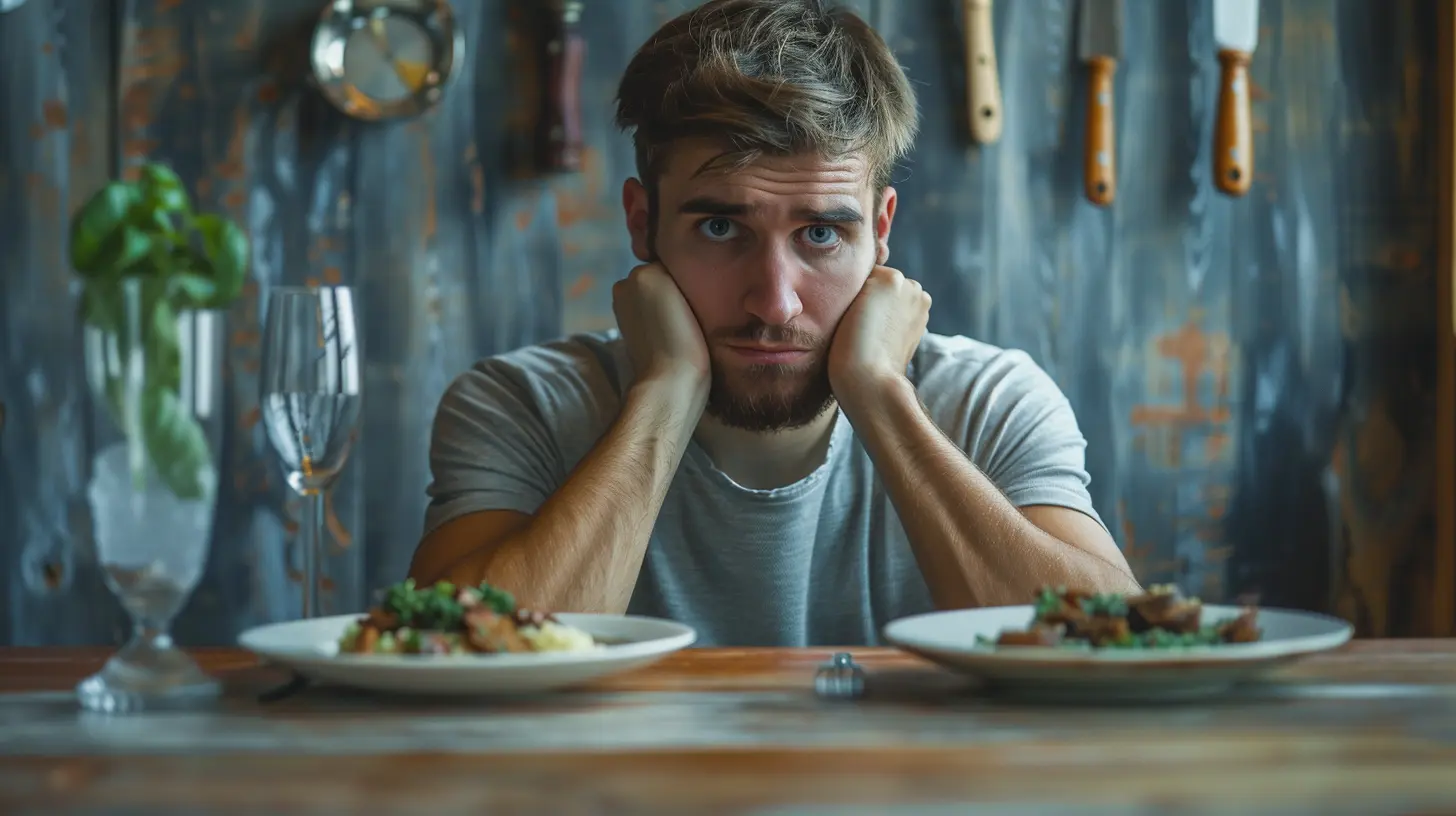The Role of Psychotherapy in Treating Eating Disorders
1 June 2025
When you're stuck in the relentless grip of an eating disorder, life can feel like a never-ending cycle of self-doubt, guilt, secrecy, and shame. Every meal can seem like a battle. Every mirror a harsh critic. But here's the good news—you don’t have to fight this war alone. One of the most powerful tools in the journey to recovery is psychotherapy.
It’s not just about talking—it’s about healing. Psychotherapy digs deep into the “why” behind disordered eating, not just the “what.” So, let’s pull back the curtain and talk plainly about the role of psychotherapy in treating eating disorders, why it works, and how it can quite literally save lives.

Understanding Eating Disorders: More Than Just Food
Let’s start with one truth we don’t say enough: eating disorders are not just about food. They’re rooted in complex emotional, psychological, and sometimes even biological factors. It’s like an emotional iceberg—a tiny part shows (like restriction or bingeing), but most of it is hidden under layers of pain, trauma, control, and perfectionism.You’ve probably heard the terms:
- Anorexia Nervosa – characterized by restricted eating and an intense fear of gaining weight.
- Bulimia Nervosa – cycles of binge eating followed by purging.
- Binge Eating Disorder – consuming large quantities of food, often in secret and accompanied by shame.
These disorders aren’t choices or phases. They’re serious mental health conditions—and psychotherapy is crucial for real change.

Why Psychotherapy?
Psychotherapy (or “talk therapy”) is much more than a couch and a clipboard. It's a safe space where you can unpack your experiences and begin to reshape the way you think, feel, and behave.Think of it like untangling a massive knot. You can't just yank at it—you need patience, strategy, and, ideally, a second pair of hands. That’s what therapy does. It helps you gently loosen the threads of self-destructive thoughts and behaviors, slowly and steadily.

Different Types of Psychotherapy for Eating Disorders
Not every therapy fits every individual, and that's totally okay. The beauty of psychotherapy is that it's flexible, personal, and deeply human. Let’s break down some of the most effective types used in treating eating disorders.1. Cognitive Behavioral Therapy (CBT)
CBT is the OG of psychotherapy—it’s one of the most researched and widely used forms. It focuses on identifying and challenging distorted thoughts (like “I’m only worthy if I’m thin”) and replacing harmful behaviors with healthier ones.This therapy is all about breaking the cycle. For example, if you binge when stressed, CBT helps you recognize the trigger, challenge the thoughts behind it, and find a better coping strategy—before the cycle repeats.
🔍 Fun fact: CBT is especially effective for bulimia and binge eating disorder.
2. Dialectical Behavior Therapy (DBT)
DBT is like the emotional ninja of therapy. Originally designed for people with intense emotional swings, it’s incredibly useful for those whose eating behaviors are tied to emotional regulation (which, let’s be honest, is most of us).It teaches skills like:
- Mindfulness (stay present instead of spiraling)
- Distress tolerance (handle uncomfortable feelings without turning to food)
- Emotional regulation (understand your emotions instead of being controlled by them)
- Interpersonal effectiveness (handle conflict and relationships in healthy ways)
If you’ve ever felt like your emotions are a tidal wave and food is your life raft, DBT could be a game-changer.
3. Family-Based Therapy (FBT)
For teens and young adults, involving family is often crucial. FBT treats the family not as part of the problem, but as part of the solution. This approach, especially for anorexia, encourages parents or caregivers to take an active role in restoring their child’s health.Imagine teamwork against the eating disorder—rather than the teen feeling isolated or shamed.
4. Psychodynamic Therapy
Think of this one as deep-sea diving into your past. Psychodynamic therapy explores how unconscious patterns, early relationships, and childhood experiences might be influencing your current struggle with food.It's not a quick fix, but it’s powerful for long-term healing, especially if your eating disorder is tied to unresolved trauma or identity struggles.
5. Acceptance and Commitment Therapy (ACT)
ACT teaches you to sit with your uncomfortable emotions instead of trying to dodge them with food behaviors. Through mindfulness and values-based living, you learn to accept what is, and commit to actions that align with who you truly want to be.It’s like learning to ride the wave, rather than being crushed by it.

How Psychotherapy Actually Helps
You might be wondering—okay, but what does therapy actually do? How does talking help someone stop starving or bingeing themselves?Let’s break down the magic:
Rewires Thought Patterns
Eating disorders often come with black-and-white thinking: “If I eat that, I’ve failed.” Therapy helps rewire these rigid, harmful thoughts and replace them with balanced, compassionate ones.Builds Emotional Awareness
A lot of disordered eating happens because we don’t know how to name or cope with emotions. Therapy helps you identify what you’re feeling and why—so you don’t have to turn to food for relief.Heals Trauma
Many individuals with eating disorders have a history of trauma—be it emotional abuse, bullying, or loss. Psychotherapy creates a safe space to process that pain, which often reduces the need to control food as a coping tool.Develops Coping Skills
The world is stressful. Life throws curveballs. Therapy equips you with tools to handle those stressors without spiraling into unhealthy behavior.Reinforces Self-Worth
This is huge. Eating disorders often stem from deep, painful feelings of unworthiness. Therapy helps you build a healthier relationship with yourself—where your value isn’t tied to your weight, size, or meals.Real Talk: Therapy Isn’t a Magic Wand
We’re not here to sugarcoat it—therapy takes work. You'll cry. You’ll feel uncomfortable. You might even want to quit. But healing isn’t a straight line—it’s a messy, beautiful climb.Here’s the thing: the effort you put in is worth it. Every small step counts. Even showing up to a session when you don’t want to? That’s courage right there.
Let’s be honest—it might take time to click with the right therapist. That’s okay. It’s a relationship, and like all relationships, fit matters. Don’t settle until you find someone who “gets” you.
How to Start: Taking the First Step
Feeling inspired? Nervous? Both? That’s normal. Starting therapy can be intimidating, but you’re not alone. Here’s a simple guide to get the ball rolling:1. Talk to your doctor – They can refer you to a therapist who specializes in eating disorders.
2. Search online directories – Psychology Today, NEDA, and local mental health organizations are great resources.
3. Ask questions during your first session – Think of it like dating. You’re allowed to ask about their experience, approach, and what therapy might look like.
4. Be honest – The more open you are, the more effective the therapy will be.
5. Stick with it – There may be ups and downs, but consistency brings results.
Support Beyond Therapy
Psychotherapy is a big piece of the puzzle, but it's not the only one. A comprehensive treatment plan may include:- Nutrition counseling
- Medical care
- Medication (for co-occurring anxiety or depression)
- Support groups
Think of recovery like a team sport—your therapist is just one (important) player on your side.
Final Thoughts: Hope Is Real
If you or someone you love is facing an eating disorder, know this: full recovery is possible. It’s not just about “managing” symptoms—it’s about reclaiming your life, your joy, your freedom.Psychotherapy lights the path forward. It doesn’t erase the pain, but it gives you the tools to rise above it. It helps you rewrite your story, one brave chapter at a time.
You don’t have to be “sick enough” to seek help. You don’t have to hit rock bottom to deserve healing. If you're struggling, that's enough reason to reach out.
So, take a breath. Then take the first step. A better relationship with food—and with yourself—starts here.
all images in this post were generated using AI tools
Category:
Clinical PsychologyAuthor:

Alexandra Butler
Discussion
rate this article
3 comments
Jett Bishop
This article effectively highlights psychotherapy's critical role in treating eating disorders. By addressing underlying psychological issues, therapy fosters emotional resilience, promotes healthier coping mechanisms, and aids in developing a positive relationship with food and body image.
June 23, 2025 at 4:55 AM

Alexandra Butler
Thank you for your insightful comment! I'm glad you found the article highlights the essential role of psychotherapy in fostering emotional resilience and healthier coping strategies in treating eating disorders.
Genevieve Hughes
Thank you for highlighting the vital role psychotherapy plays in healing eating disorders. Your insights remind us that understanding and compassion are essential in this journey, offering hope to those who struggle and emphasizing the importance of support.
June 4, 2025 at 3:51 PM

Alexandra Butler
Thank you for your thoughtful feedback! I'm glad the article resonated with you and highlighted the importance of understanding and support in the healing process.
Bellamy McVeigh
Psychotherapy for eating disorders? It's like coaching a spaghetti monster to twirl its noodles with grace! Unraveling the tangled thoughts and emotions can help those spaghetti monsters embrace their true selves, one therapy session at a time. Twirls, knots, and all—let the healing begin!" 🍝✨
June 4, 2025 at 3:47 AM

Alexandra Butler
Absolutely! Just like untangling spaghetti, psychotherapy helps individuals navigate their complex emotions and thoughts, fostering self-acceptance and healing. 🍝✨



